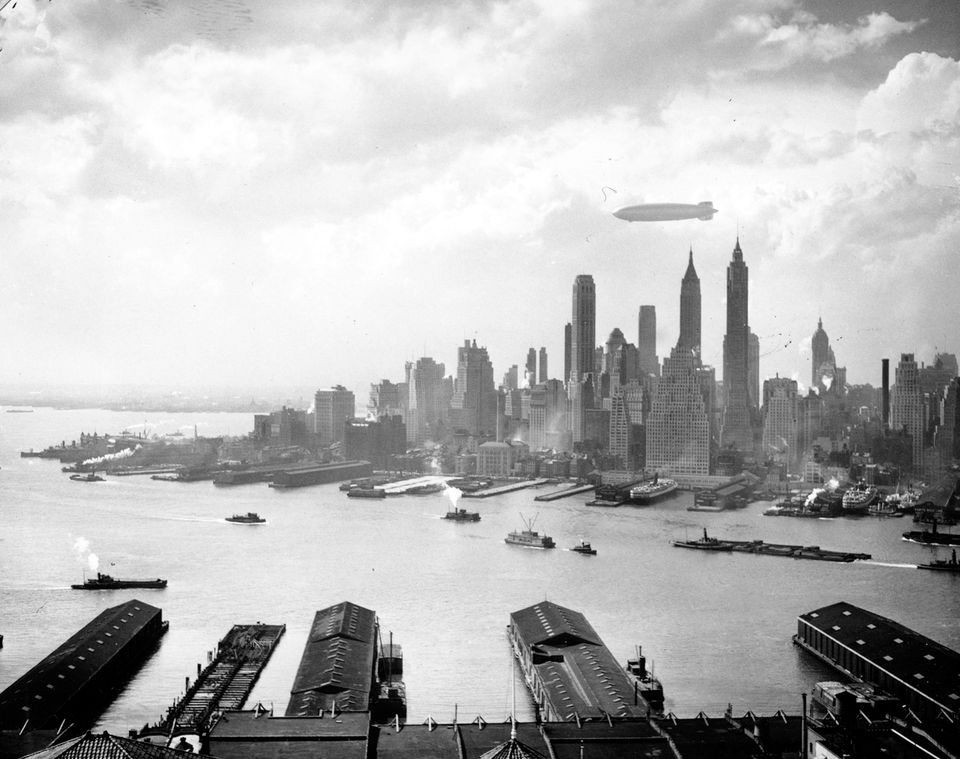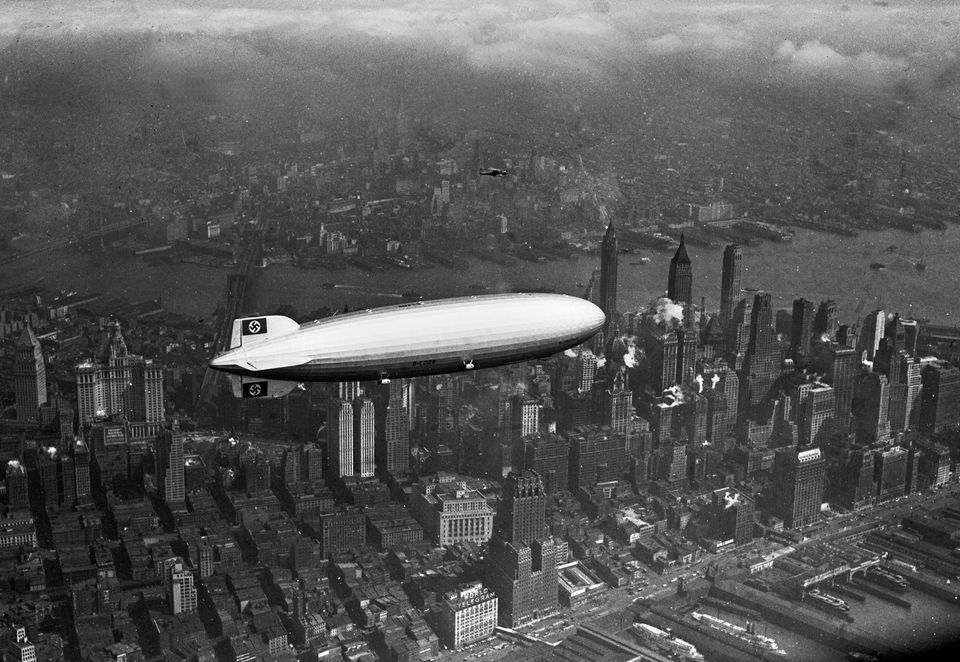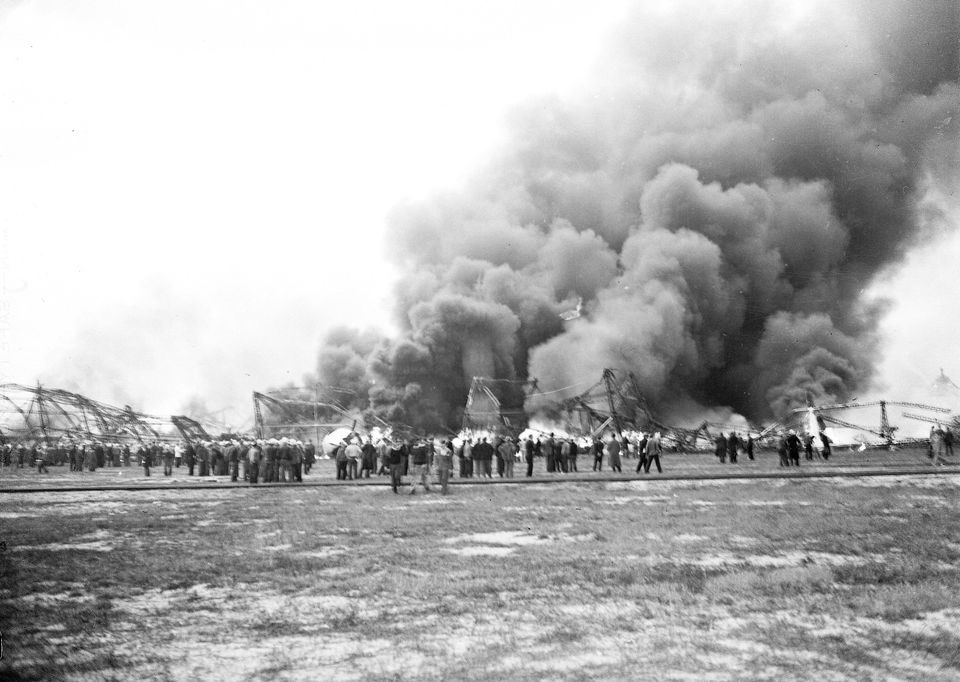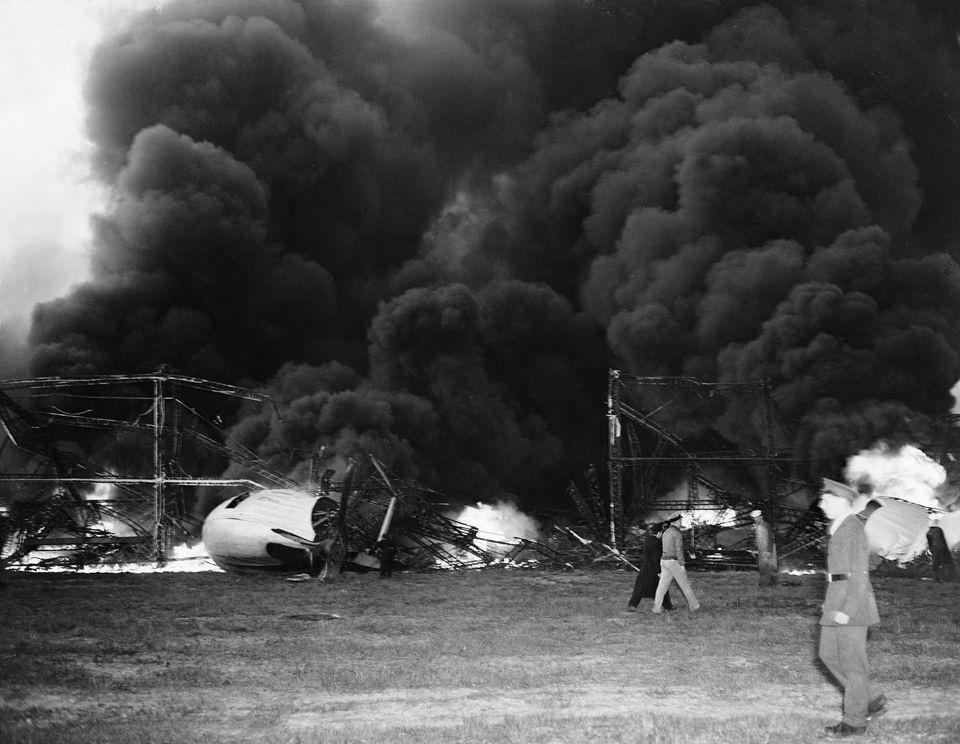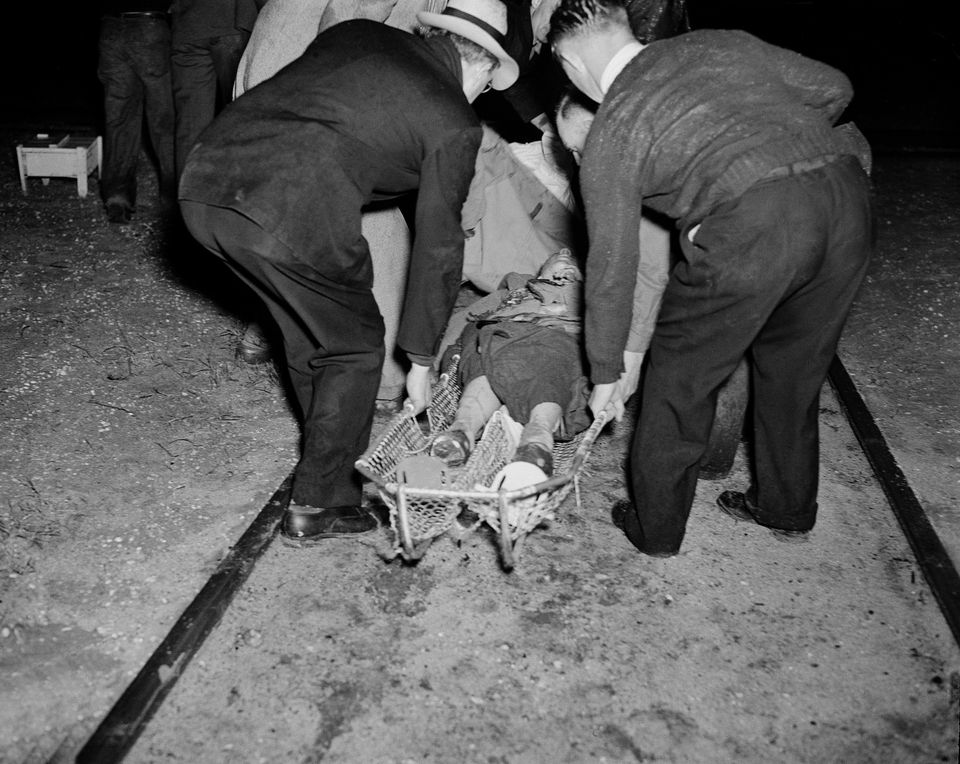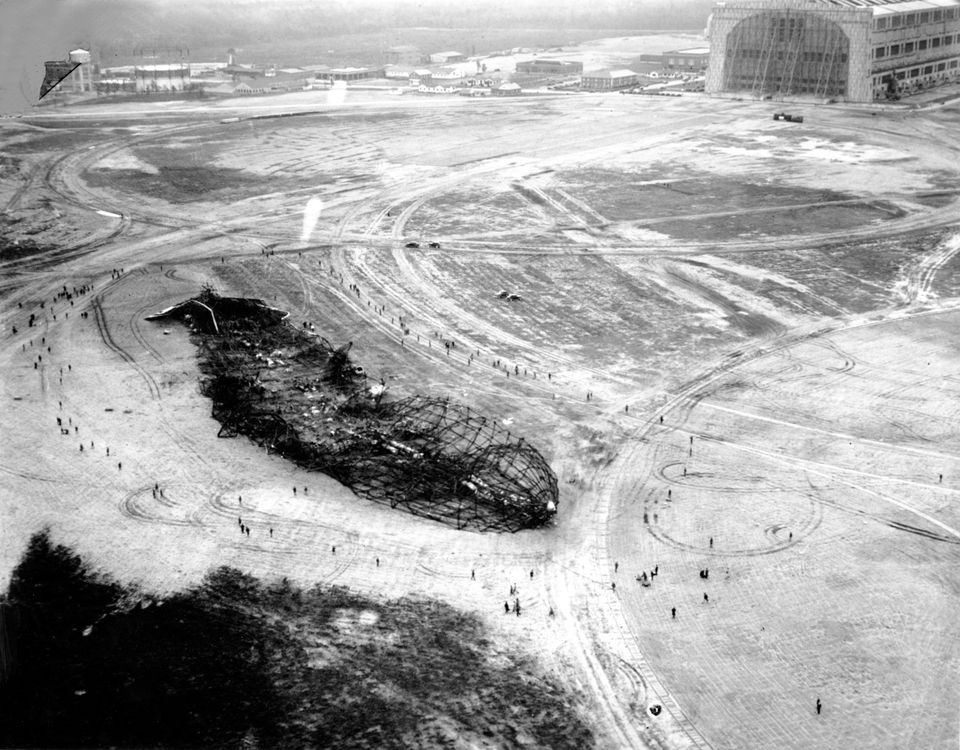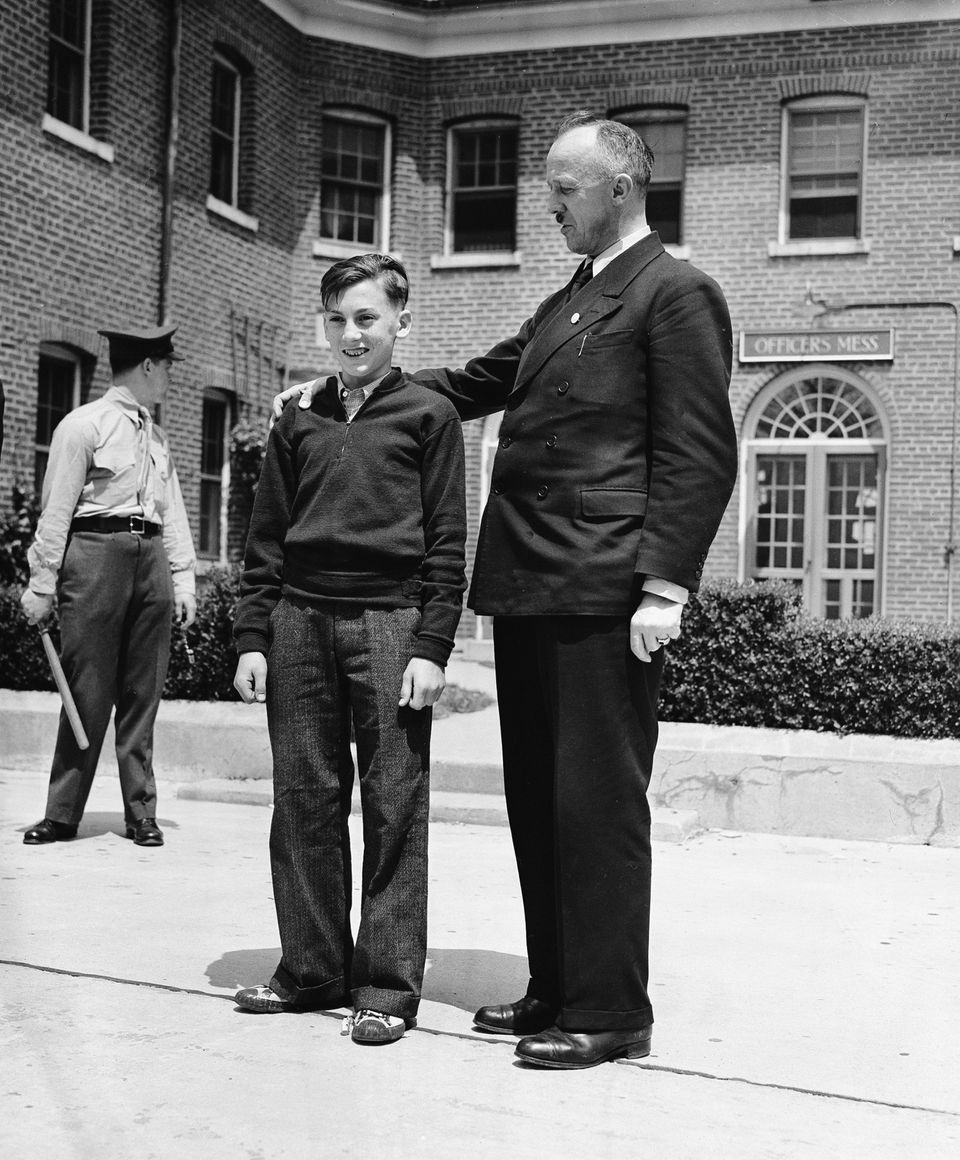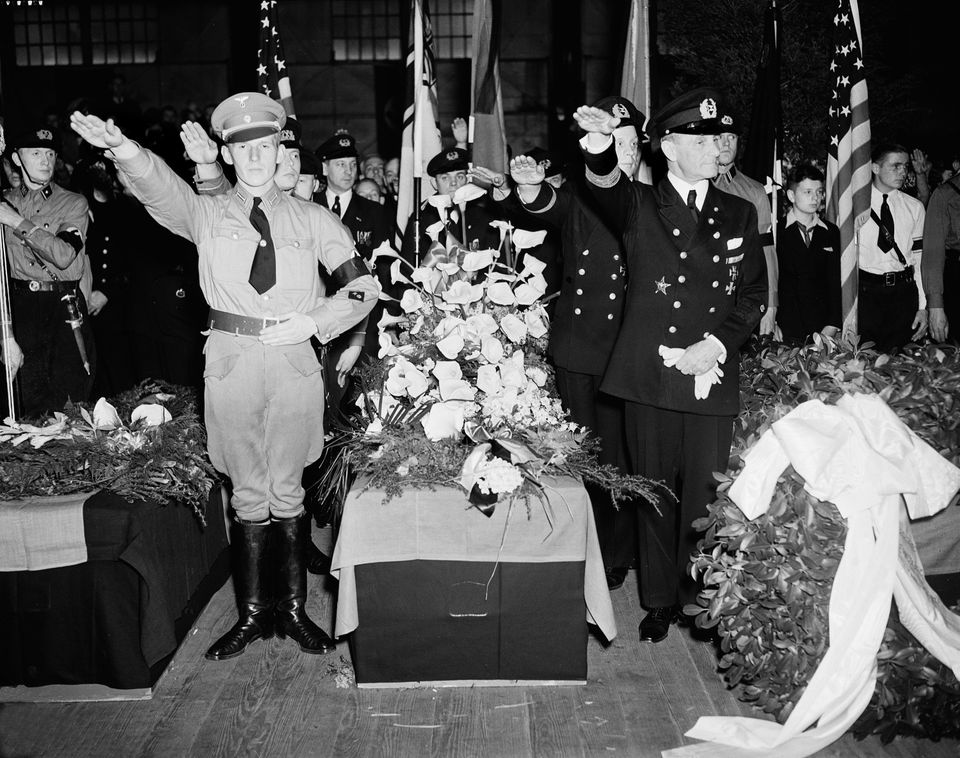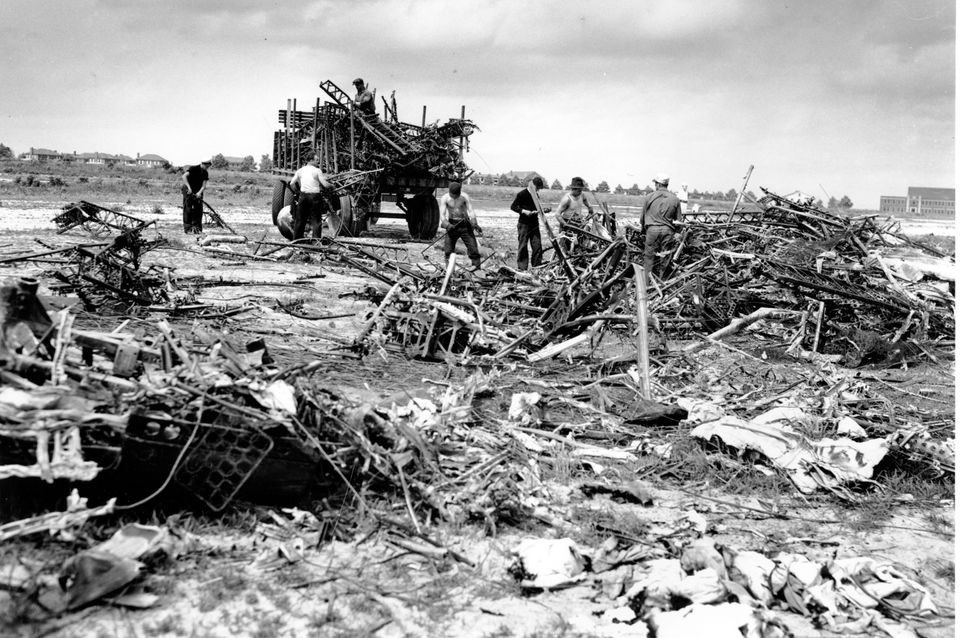The crash of the Hindenburg was one of the most jarring aviation disasters of its day.
Thirty-six people, including passengers and crew, were killed when the hydrogen-filled zeppelin ignited while attempting to dock with its mooring mast at Naval Air Station Lakehurst, New Jersey, on May 6, 1937. Although the exact cause of the blaze remains debated, spectacular photos and film footage of the fiery wreck were enough to shatter public confidence in zeppelin travel, ending an era of aviation.
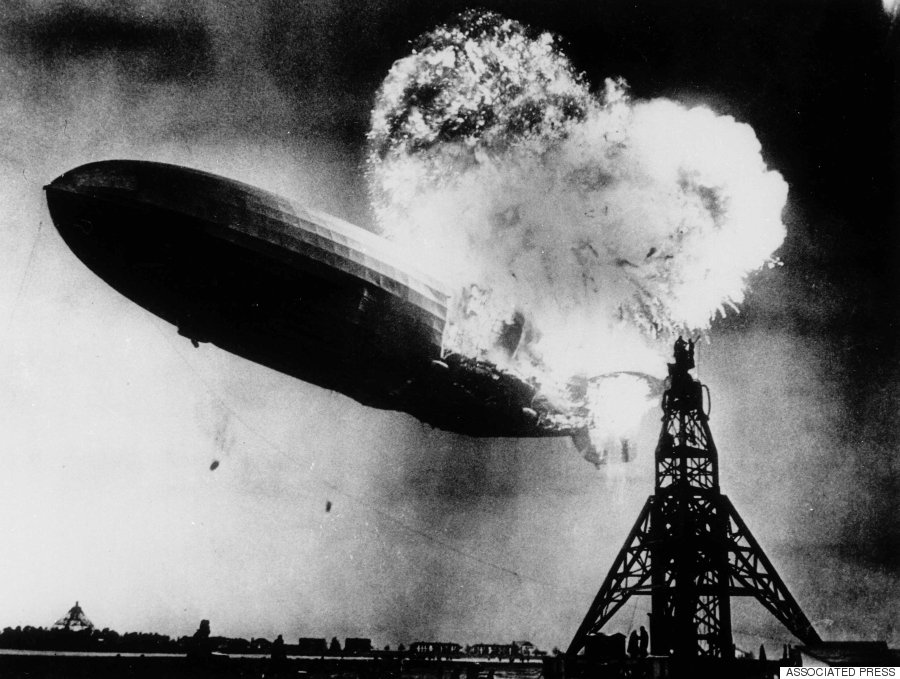
This photo, taken at almost the split second that the Hindenburg exploded, shows the 804-foot German zeppelin just before the second and third explosions send the ship crashing to the earth over the Lakehurst Naval Air Station in Lakehurst, N.J., on May 6, 1937.
Perhaps the most iconic images of the crash are those that show the airship on fire, but other, lesser known photos of the Hindenburg and its aftermath are compelling in their own right. How bizarre it is to spot a dirigible soaring over lower Manhattan hours before its historic demise; or to see swastika-draped caskets on display in New York City, before their return to Nazi-controlled Germany.
(All photos and captions: Associated Press)
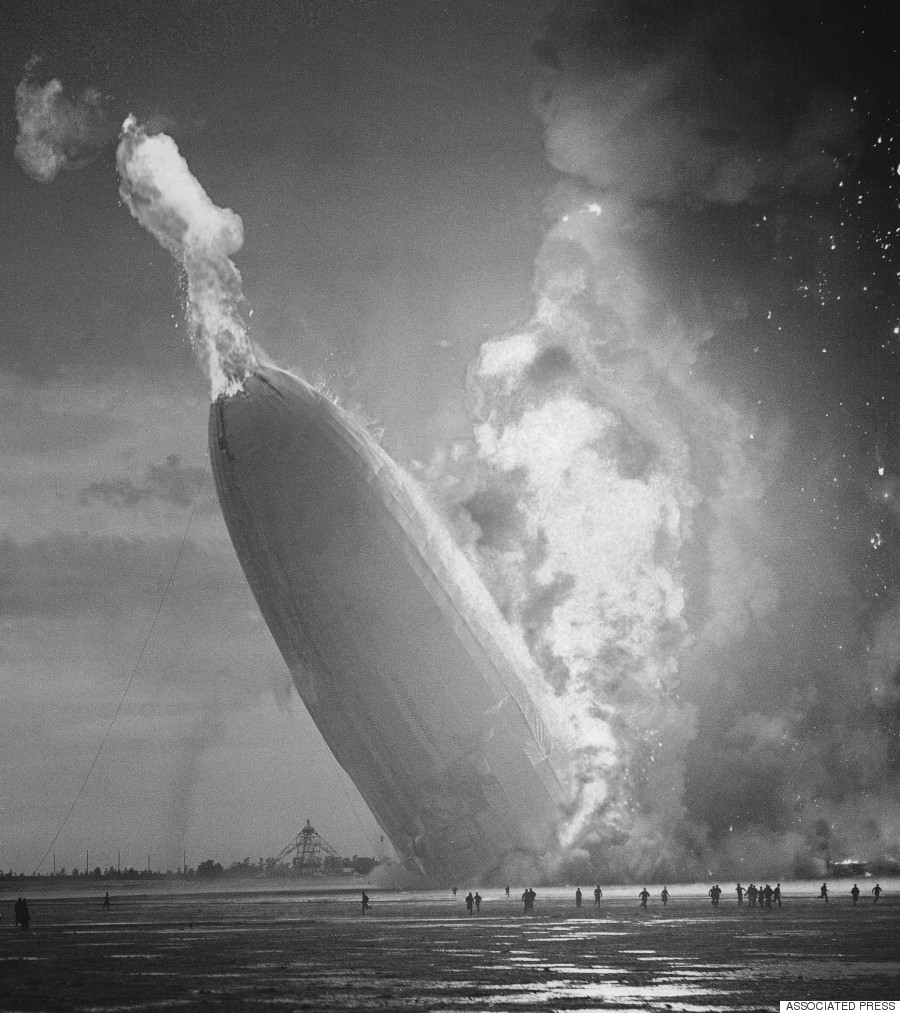
ASSOCIATED PRESS
The German zeppelin Hindenburg floats over Manhattan Island in New York City on May 6, 1937.
ASSOCIATED PRESS
The Hindenburg flies over Manhattan on May 6, 1937.
ASSOCIATED PRESS
The Hindenburg zeppelin burns after it exploded during the docking procedure at Lakehurst Naval Air Station, N.J., on May 6, 1937. The hydrogen inflated dirigible burst into flames, killing 36 of the 97 persons on board.
AP
Black smoke rises from the skeleton of the burning Hindenburg airship at Lakehurst, N.J., May 6, 1937. The German-built zeppelin caught fire and exploded mid-air as it was landing after its transatlantic voyage, carrying 97 passengers and crew. Thirty-five people on board and one ground crew member were killed. (AP Photo/Murray Becker)
AP
A victim of the Hindenburg disaster is taken away in a stretcher in the aftermath of the airship crash in Lakehurst, N.J., May 6, 1937.
ASSOCIATED PRESS
This is an aerial photo of the wreckage of the German Hindenburg airship at Lakehurst, N.J. on May 7, 1937.
AP
Two survivors of the Hindenburg disaster, 13-year-old Werner Franz, cabin boy, and Heinrich Kubis, a steward, are shown in Lakehurst, N.J., May 7, 1937.
ASSOCIATED PRESS
Funeral services for the 28 Germans who lost their lives in the Hindenburg disaster May 6 are held on the Hamburg-American pier in New York City, May 11, 1937. The swastika-draped caskets were placed on board the Hamburg for their return to Europe. About 10,000 members of German organizations line the pier.
AP
German Nazis give the salute as they stand beside the casket of Capt. Ernest A. Lehmann, former commander of the zeppelin Hindenburg, during funeral services held on the Hamburg-American pier in New York City, May 11, 1937.
ASSOCIATED PRESS
The remains of the wreckage of the German Zeppelin Hindenburg are removed from the U.S. Naval field in Lakehurst, N.J., on May 15, 1937. The airship exploded mid-air prior to landing May 6.


